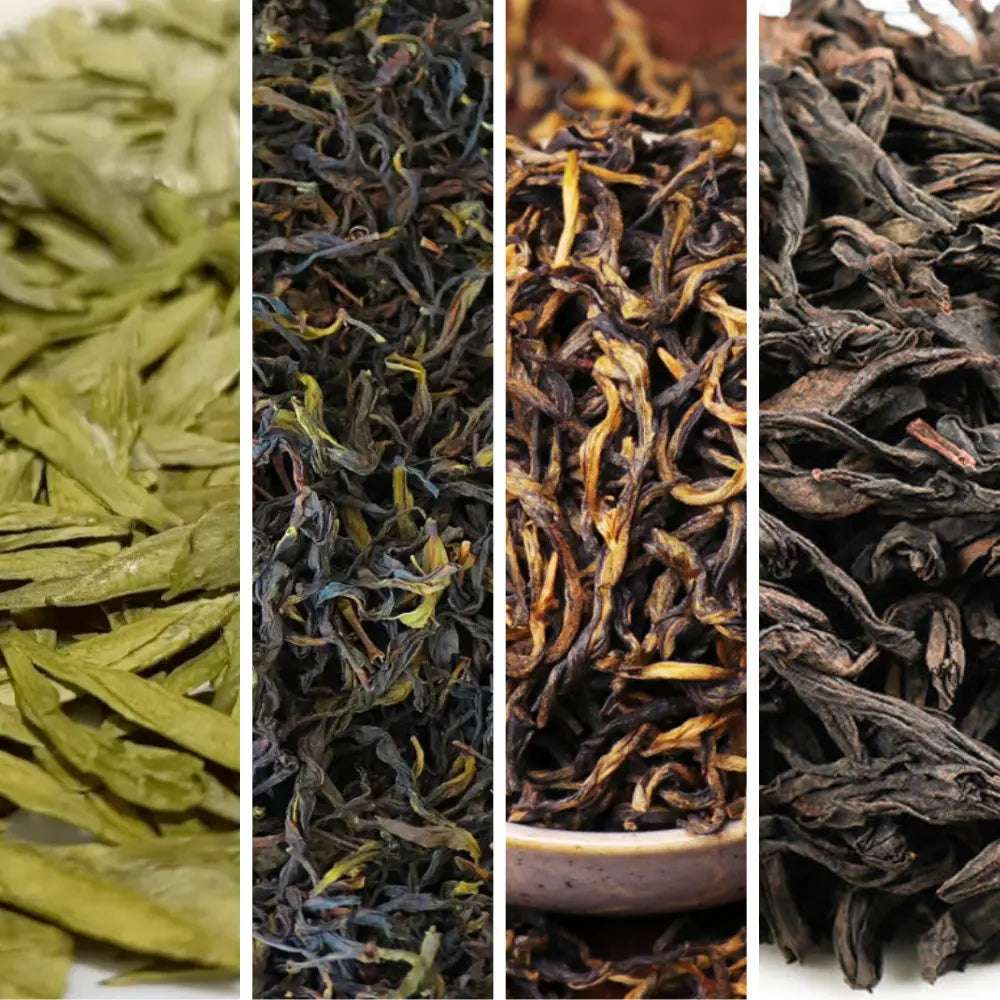
What is Chinese Restaurant Tea? The Secrets in Your Teapot
When you sit down at a Chinese restaurant, before you even glance at the menu, a steaming pot of tea often magically appears on your table. It's a gesture of hospitality, a palate cleanser, and an essential part of the dining experience. But have you ever wondered, what is the tea used in Chinese restaurants?
The answer is more varied and fascinating than you might think. While many places have a standard "house tea," the type of tea in Chinese restaurants can range from classic green and oolong to fragrant herbal infusions, depending on the region, the style of cuisine, and the specific restaurant. In this guide, we'll demystify that pot of Chinese restaurant hot tea and explore the delicious varieties you might encounter.
The "House Tea": The Most Common Chinese Restaurant Teas
For most American Chinese restaurants, the complimentary pot of tea is usually one of a few crowd-pleasing and cost-effective options. These teas are chosen because their flavors pair well with a wide variety of savory and sometimes spicy dishes.
Jasmine Tea (Mòlìhuā Chá)
This is arguably the most common Chinese restaurant tea in the United States. Jasmine tea is not a type of tea itself, but rather a green tea that has been scented with fresh jasmine blossoms. The leaves absorb the fragrant floral aroma, resulting in a brew that is delicately sweet, soothing, and highly aromatic. Its light profile won't overpower the food, making it a perfect all-purpose choice.
Oolong Tea (Wūlóng Chá)
Another incredibly popular choice is a basic Oolong tea. Sitting between green and black tea in terms of oxidation, oolong has a smooth, slightly roasted, and sometimes subtly fruity flavor. It's robust enough to cut through the richness of fried foods but gentle enough not to dominate more delicate dishes. Many restaurants serve a variety called Tie Guan Yin (Iron Goddess of Mercy).
Beyond the House Tea: Other Classics You Can Order
If you look at the beverage menu, you'll often find more specific and higher-quality options. These are the teas you might order to elevate your dining experience.
Green Tea (Lǜ Chá)
While Jasmine tea uses a green tea base, you can often order a pure green tea in a Chinese restaurant. This tea is unoxidized, giving it a fresh, vibrant, and sometimes grassy or vegetal flavor. It’s known for its high antioxidant content and is wonderfully refreshing, pairing especially well with seafood and vegetable dishes.
Pu-erh Tea (Pǔ'ěr Chá)
If you've ever been to a dim sum or "yum cha" restaurant, this is almost certainly the dark, earthy tea you were served. Pu-erh is a fermented dark tea from Yunnan province, famous for its digestive properties. It has a deep, rich, and smooth flavor that is excellent for cutting through the grease and richness of dim sum dishes like dumplings, buns, and fried items.
Regional and Herbal Restaurant Teas
In China, the tea served is often highly regional. While less common in standard American Chinese restaurants, you'll find these authentic options in more specialized or regional establishments.
Cantonese Herbal Teas (Leung Cha - 凉茶)
In Southern China (Guangdong province), diners often drink "cooling teas" or leung cha. These are herbal infusions believed to balance the "heatiness" of fried and rich foods. They are often slightly sweet and incredibly refreshing.
- Chrysanthemum Tea (Júhuā Chá): A light, floral, and naturally sweet tea known for its cooling properties. Often sweetened with rock sugar.
- Luo Han Guo Tea (罗汉果茶): Made from monk fruit, this tea is naturally sweet without the calories and is great for soothing a sore throat.
- Goji Berry & Red Date Tea (枸杞红枣茶): A nourishing and warming wellness tea with a gentle sweetness, beloved for its health benefits.
Other Regional Favorites
- Barley Tea (Dàmài Chá): Common in Northern Chinese and Korean-Chinese restaurants, this is a caffeine-free roasted grain infusion with a nutty, toasty, and comforting flavor.
- Hong Kong Milk Tea (Nǎichá): A cultural icon! This is a strong, robust black tea blend strained through a cloth filter and mixed with evaporated or condensed milk. It's rich, creamy, and powerfully caffeinated.
How to Choose and Enjoy Your Tea
With so many options, how do you pick the right one? Here are a few tips and some simple etiquette to enhance your experience.
- Match Your Meal: Pair light teas (Jasmine, Green) with delicate dishes like steamed fish. Pair robust teas (Oolong, Pu-erh) with heavier, richer, or fried dishes.
- Consider the Time: If it's late, a caffeine-free herbal tea like Chrysanthemum or Barley might be a better choice.
- Pour for Others First: It is a sign of respect and good manners to pour tea for your companions before filling your own cup.
- Say "Thank You": When someone pours tea for you, you can show thanks by gently tapping your index and middle fingers on the table twice. This silent gesture is a widely practiced custom.
- Ask for More Water: To signal that you need a refill, simply leave the lid of the teapot ajar. The server will see it and bring hot water to top up your pot.
Conclusion
The pot of tea at a Chinese restaurant is far more than just a simple beverage; it's a window into a rich culture of hospitality, wellness, and culinary harmony. From the familiar floral notes of Jasmine to the deep, earthy comfort of Pu-erh, each type of tea in Chinese restaurants offers a unique way to enhance your meal.
So, the next time you dine out, don't be afraid to ask what the house tea is or to explore other varieties on the menu. You might just discover a new favorite and a deeper appreciation for the art and tradition that comes in every single cup.



